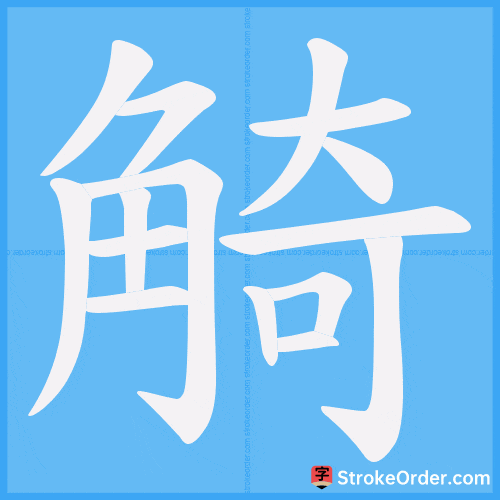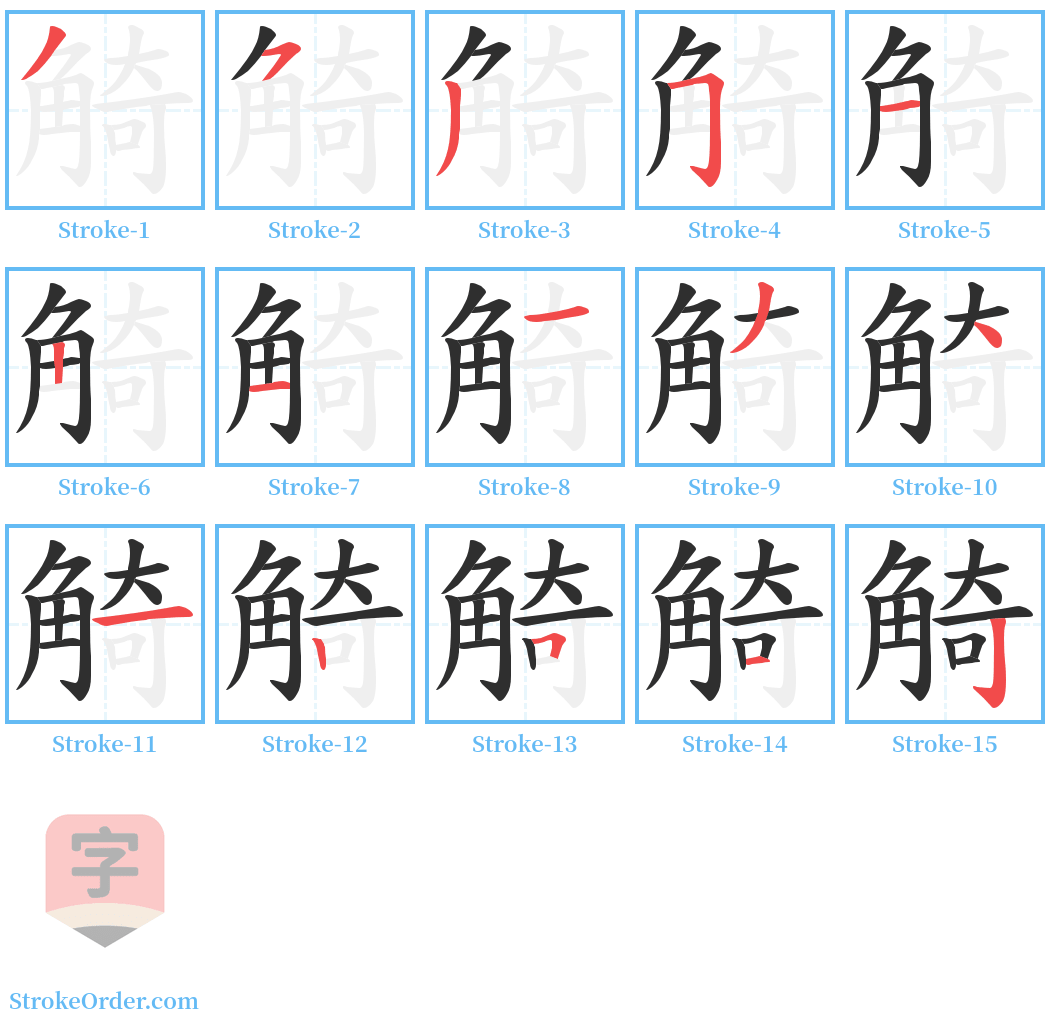觭 Stroke Order
Animated Stroke Order of 觭

Stroke Order Diagrams for 觭

Information of 觭
Pinyin
jī、 qí
Radical
角
Strokes
15 strokes
Usage
★★
Definition
觭 [jī]
1.角一俯一仰。 (One horn turned up and the other turned down.)
2.偏,偏向一边。 (Tilted, leaning to one side.)
3.古通“奇”,单(与“偶”相对)。 (An ancient homophone for "奇," meaning odd (as opposed to even).)
形 (Form):
1.像两个角一向上一向下弯的,不对称的。 (Of horns: one turned up and one turned down.)
2.数目不成双的,与“偶”相对。 (Odd, not paired, the opposite of even.)
3.单独。 (Single.)
4.奇怪。 (Strange.)
动 (Verb):
获得、得到。 (To get, to obtain.)
引 (References):
1.《说文》:觭,角一俯一仰也。从角,奇声。 (From "Shuowen": 觭 means one horn turned up and one turned down, derived from "角" and sounds like "奇.")
2.《易·睽》:荀木其牛觭。 (From "I Ching": referring to a specific type of dream.)
3.《汉书·五行志》引《公羊传》:匹马觭轮无反者。 (From "Han Shu": a horse that runs straight without turning.)
例 (Examples):
1.又如: 觭重 (tilted).
2.如: 觭偶 (odd and even; implies contradiction or inconsistency).
3.又如: 觭介 (single, biased to one side).
4.《周礼》:二曰觭梦。 (From "Zhou Li": referring to a specific type of dream.)
古通“奇”,奇怪。 (An ancient homophone for "奇," meaning strange.)